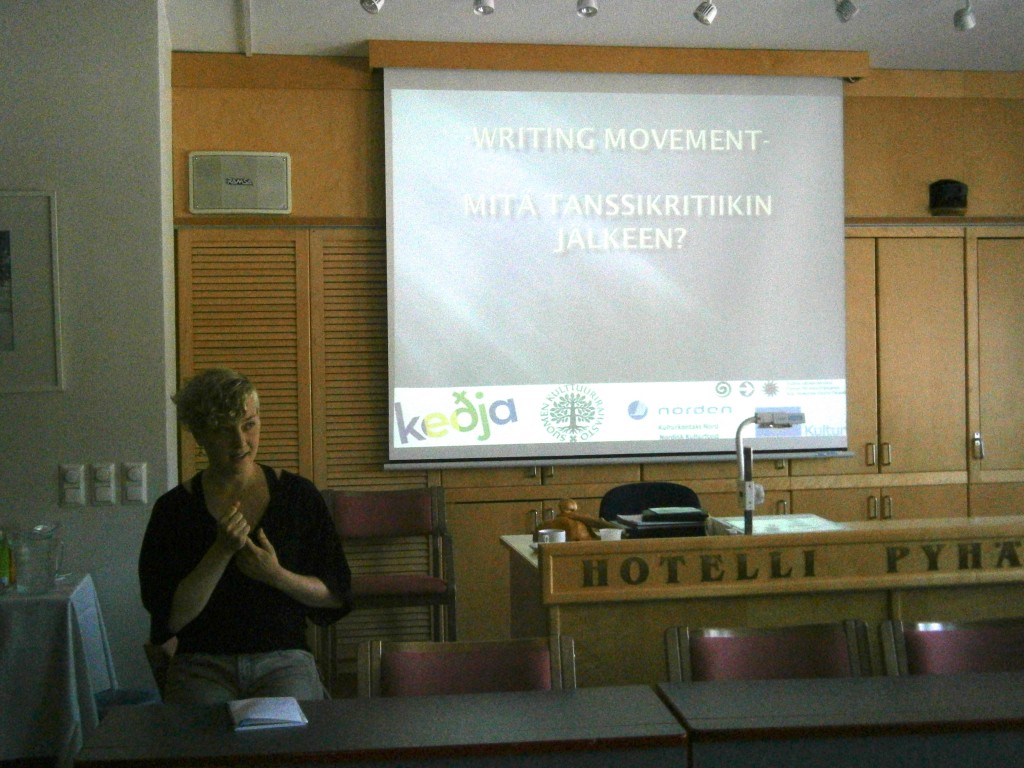The Finnish Writing Movement on Full Moon Dance Festival: ”After Dance Criticism?”
As a part of Full Moon Dance Festival in Pyhäjärvi, Middle Finland, a discussion workshop was held July 24th by Writing Movement.
A group of dance artists and other professionals working in dance field discussed the theme ”After dance criticism?” according to this year’s theme of the festival: ”After Contemporary”. The discussion was led by the undersigned and the participants talked and shared thoughts and ideas about these questions:
Question Set One
- Where does dance happen?
- What kinds of dance are there?
- Why do people make dance?
- Where do we find writing about dance?
- What kinds of writing about dance are there?
- Why do people write about dance?
Question Set Two
- Why do we have dance reviews? Who needs them?
- What does a dance artist expect from a rewiew / from another form of dance writing?
- What are the expectations of a writer towards dance?
- What are / could be the new appearing forms of dance writing? Solutions? Utopias? Dreams?
In higly limited time people came up with this: dance can be so much more than only performances. Dance is everywhere and all it takes is to look around ”through dance lenses”. It is also present as movement and sensations inside people’s bodies and on the other hand also in discos and clubs. Dance happens also as organised action amongst different sub cultures – and also when you’re dancing at home, alone.
Dance writing is found in grant applications, communications and marketing texts, artist interviews, programs, research texts, different articles, books, Facebook discussions and private messages. One artist commented on this that now when she’s working with her newest dance piece she has invited a writer to participate into the working process of making the piece. The writer makes perceptions and verbalizes what he sees.
The artists argued on behalf of the making of dance by saying that it’s a means of expressing one’s own existence and understanding it, about building a bridge between the world and oneself, about structuring and proportioning things, about thinking without words through dancing. The text that is written about dance can be described as an arrow pointing to the dance that is happening or has happened.
Dance writing exists because the critics need their salaries, the audience wants to read the text and because the dance discourse – even if in this case the quite superficial, not the deep discourse – needs the text. Dance reviews always have an impact on dance makers on some level. The critics got to hear some straight words from the artists in the discussion: the artists think that the critics often seem to write about all dance from the same perspective. The dance makers also stressed the importance of the real possibility for writers to specialise in writing about a specific form or genre of dance, to become really skilled in a more limited dance aesthetics.
Dreams? That the dance makers would write more about their own work, texts would be published to clearly defined target audiences, slow writing and slow criticism about dance (that will say deeper and longer texts). The participants also started to outline the suggestion of physical practice for writers, a body-based experience of dance art. It was also said that the writers often create the needs of the public and that the information about dance in written form is many times needed very fast because of the short performance periods. In the end of the discussion the role of a dance review was once more taken up. One participant stated that a good review is like an invitation towards art; attractive, itchy and exhilarating.
Jenni Sainio
Writing Movement coordinator in Finland with Veera Lamberg, the leading moderator and editor of Liikekieli.com
